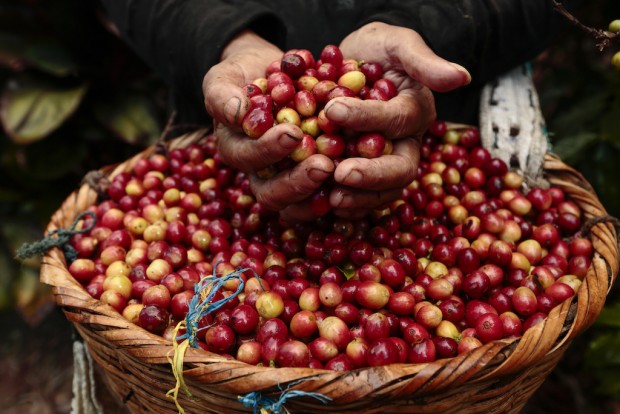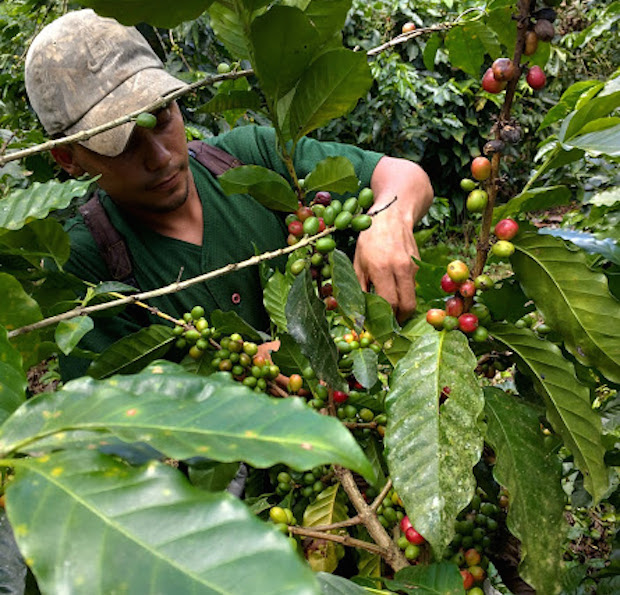I recently read the NPR story about apple pickers in Pennsylvania. The piece made me reflect on the larger idea of “the harvest” and contrasted it to the physical acts of harvesting. The harvest represents the culmination of a season’s worth of work and investment — but also a bit of fortune having nature cooperate and provide you with just the right conditions — and is celebrated with feasts and festivals. (My personal favorite is Thanksgiving, closely followed by Hoes Down).
Yet, removed from the romance of the rituals and festivals that are the hallmarks of harvest season and getting down to the heart and business of agriculture — harvesting or picking is the most basic yet essential piece of agricultural labor that is often and easily overlooked.
As it is the start of the coffee harvest in Nicaragua, I’d like to take a moment to reflect on the role of the coffee picker.
For the great majority of Arabica coffees, every single bean is hand-harvested. This is where quality starts. Only by picking the coffee cherries (cereza in Spanish) at their optimal ripeness can we get the very best expression of that coffee in your cup. Over-ripe, under-ripe — these defects will slowly taint the cup quality. And yet, when pickers are paid a piece rate, there is little reason to selectively harvest only the ripest cherries. Selectively harvesting slows down how fast you can pick.
Rather than finding ways to penalize pickers, incentives need to be in place that reward picking only ripe cherries and training on quality needs to permeate the entire farm and the entire farm staff, down to the pickers. Two years ago, Michael (Sheridan) wrote about how Portland Roasting gave out snap bracelets that were the exact color of a ripe coffee cherry so that pickers had a visual reminder to pick only the ripest. The Tekangu cooperative in Nyeri, Kenya makes 2nd payments to farmers on the basis of quality. In La Revancha, Nicaragua, coffee pickers received trainings on quality and had special bags to put dried, diseased or other damaged cherries that didn’t make the cut.
Here in Nicaragua, a picker is paid between 27 to 30 cordobas per lata, or $0.99 to $1.10 at today’s exchange rate. A lata is a very localized unit of harvest measure. It is a box, measuring 10”x10”x12.5” with a volume of about 20 liters. One lata of coffee cherries is approximately 6 pounds of green coffee, or 5 pounds of roasted coffee. The pickers fill up their baskets, putting their day’s harvest into plastic jute sacks. When the day is done, the capataz, or picking squad leader, will physically measure out the volume of cherries for each picker.
Pickers average four to eight latas per day. The Nicaraguan government estimates that five latas a day is the average for a picker, which is used to establish the minimum price paid per lata. That is a daily wage of 150 cordobas or approximately $5.42. To put that in perspective, it’s less than the cost of a single pumpkin spice latte in NYC. According to the NPR piece, apple pickers can make $250 a day and could comfortably buy any apple-based product — apple pies, apple cider, apple juice, Apfelkorn, apple sauce. You get the point.
I don’t have any grandiose ideas here on how to improve the lot of millions of coffee workers who are key to bringing us the product we enjoy and depend upon every day. Although, Michael has a few ideas and some concrete suggestions to get us started. Rather, as we start harvest here in Central America, I’d like to ask you just visualize how many hands touched each of the beans in your cup of coffee.
Hands like these. These are the hands that bring you your coffee.

Hands of María del Socorro López López, 43, a coffee picker at La Revancha Coffee Estate in Matagalpa. Photo by Oscar Leiva.
Kraig Kraft
Kraig Kraft is the CRS Technical Advisor for Coffee and Cacao for the Latin America/Caribbean. He is Based in Managua.
Comment
1 Comment
Comments are closed.







Solution is easy. Pay 35 or more per lata for rue cherries. Farmers who pay low per lata get lousy picking. How much do Kona coffee pickers get? That is the proper comparison if picked by hand.